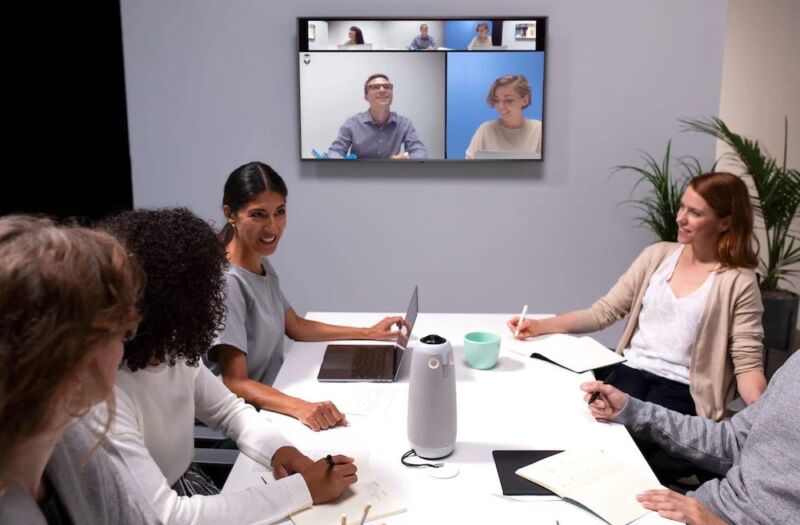- RESTful API to retrieve PII data will no longer be possible
- Implement MQTT service restrictions to secure IoT comms
- Removing access to PII from a previous owner in the UI when transferring a device from one account to another
- Limiting access or removing access to switchboard port exposure
- Fix for Wi-Fi AP tethering mode
Meeting Owl videoconference device used by govs is a security disaster
No patch yet for easy-to-hack access point that leaks data and exposes networks to hacks.
 The Meeting Owl Pro is a videoconference device with an array of cameras and microphones that captures 360-degree video and audio and automatically focuses on whoever is speaking to make meetings more dynamic and inclusive.
The Meeting Owl Pro is a videoconference device with an array of cameras and microphones that captures 360-degree video and audio and automatically focuses on whoever is speaking to make meetings more dynamic and inclusive.
The consoles, which are slightly taller than an Amazon Alexa and bear the likeness of a tree owl, are widely used by state and local governments, colleges, and law firms.
 A recently published security analysis has concluded the devices pose an unacceptable risk to the networks they connect to and the personal information of those who register and administer them.
A recently published security analysis has concluded the devices pose an unacceptable risk to the networks they connect to and the personal information of those who register and administer them.
The litany of weaknesses includes:
- The exposure of names, email addresses, IP addresses, and geographic locations of all Meeting Owl Pro users in an online database that can be accessed by anyone with knowledge of how the system works. This data can be exploited to map network topologies or socially engineer or dox employees.
- The device provides anyone with access to it with the interprocess communication channel, or IPC, it uses to interact with other devices on the network. This information can be exploited by malicious insiders or hackers who exploit some of the vulnerabilities found during the analysis
- Bluetooth functionality designed to extend the range of devices and provide remote control by default uses no passcode, making it possible for a hacker in proximity to control the devices. Even when a passcode is optionally set, the hacker can disable it without first having to supply it.
- An access point mode that creates a new Wi-Fi SSID while using a separate SSID to stay connected to the organization network. By exploiting Wi-Fi or Bluetooth functionalities, an attacker can compromise the Meeting Owl Pro device and then use it as a rogue access point that infiltrates or exfiltrates data or malware into or out of the network.
- Images of captured whiteboard sessions—which are supposed to be available only to meeting participants—could be downloaded by anyone with an understanding of how the system works.

Glaring vulnerabilities remain unpatched
 Researchers from modzero, a Switzerland- and Germany-based security consultancy that performs penetration testing, reverse engineering, source-code analysis, and risk assessment for its clients, discovered the threats while conducting an analysis of videoconferencing solutions on behalf of an unnamed customer. The firm first contacted Meeting Owl-maker Owl Labs of Somerville, Massachusetts, in mid-January to privately report their findings. As of the time this post went live on Ars, none of the most glaring vulnerabilities had been fixed, leaving thousands of customer networks at risk.
Researchers from modzero, a Switzerland- and Germany-based security consultancy that performs penetration testing, reverse engineering, source-code analysis, and risk assessment for its clients, discovered the threats while conducting an analysis of videoconferencing solutions on behalf of an unnamed customer. The firm first contacted Meeting Owl-maker Owl Labs of Somerville, Massachusetts, in mid-January to privately report their findings. As of the time this post went live on Ars, none of the most glaring vulnerabilities had been fixed, leaving thousands of customer networks at risk.
In a 41-page security disclosure report (PDF) the modzero researchers wrote:
While the operational features of this product line are interesting, modzero does not recommend using these products until effective measures are applied. The network and Bluetooth features cannot be turned off completely. Even a standalone usage, where the Meeting Owl is only acting as a USB camera, is not suggested. Attackers within the proximity range of Bluetooth can activate the network communication and access critical IPC channels.


No comments:
Post a Comment